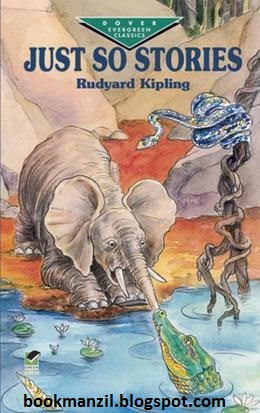

My favorite stories were “How the Camel Got His Hump” and “The Cat That Walked By Himself.” I liked all twelve. Instead of taking our children literally, let’s give them stories that explain things! The creativity is fun.

Reading Kipling’s stories encouraged made me to think of my own creative explanations for why things are as they are. I enjoyed a retreat into a magical world. In these stories, Kipling gives us the fairy tales that explain to us how the things we are familiar with came to be: how the whale got his throat, how the elephant got his trunk, how the leopard got spots, and so forth. I very much enjoyed reading them again, although there are some “politically incorrect” stereotypes in them I hadn’t expected. I read Rudyard Kipling’s Just So Stories because I wanted to read this Nobel-prize winning author and also because I remembered the imaginative premise of his magical world and wanted to experience his world as an adult. I may receive compensation for any purchased items. Posts written from review copies are labeled. *** It is easy to imagine that the "O my Best Beloved" to whom Kipling later told the JUST SO STORIES was his oldest child, Vermont-born Josephine ("josie") who died of pneumonia at age six.Note: I occasionally accept review copies from the publisher. It is called "The Cat That Walked by Himself." And the free-spirited cat was notable for negotiating, not entirely to his satisfaction, the anarchical terms under which he will consent to live with Man, Woman and Baby "for always and always and always." *** Standing far apart from the animal tales are two inter-twined yarns: "How the First Letter Was Written" and "How The Alphabet Was Made." Rooting the alphabet as we know it in a young cave girl's efforts to send a message home through a stranger speaking a different language but carrying with him an incomprehensible sketch she had drawn, Kipling makes learning the alphabet extra fun for youngsters and adds a bit of spoofing history as well. But my favorite is about the domestication by earliest humans of the first wild animals: dog, horse and cat. a young elephant's puffy nose being stretched out to today's dimensions by a crocodile trying to drag the curious youngster for its dinner into "the great gray-green, greasy Limpopo River, all set about with fever-trees"). *** Most of the stories are about animals, usually having one part of their anatomy being transformed by outside pressure ( e.g. Some later editions added a 13th ("The Tabu Tale") and might have added a 14th from 1895, THE JUNGLE BOOK, on how the tiger got his stripes. The original edition (1902) of Rudyard Kipling's yarns for children, JUST SO STORIES, has 12 tales.


 0 kommentar(er)
0 kommentar(er)
